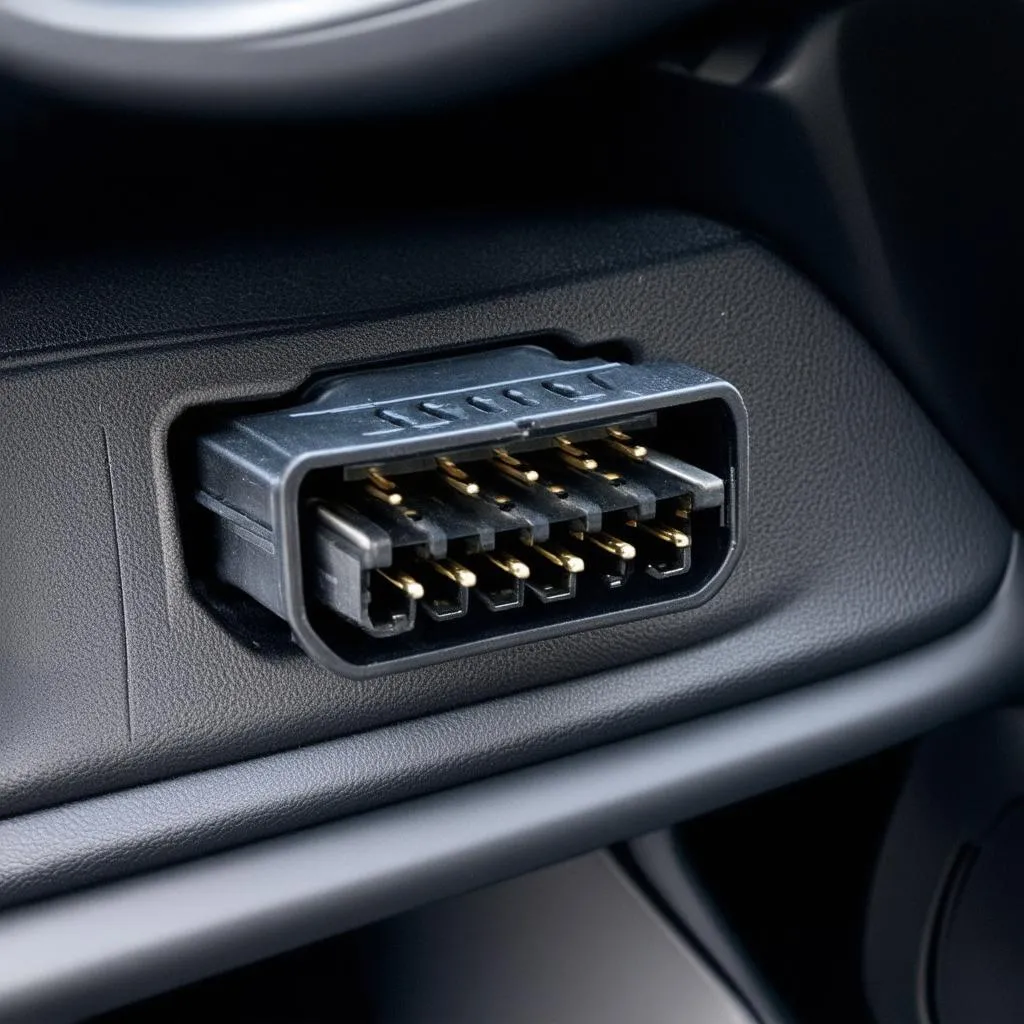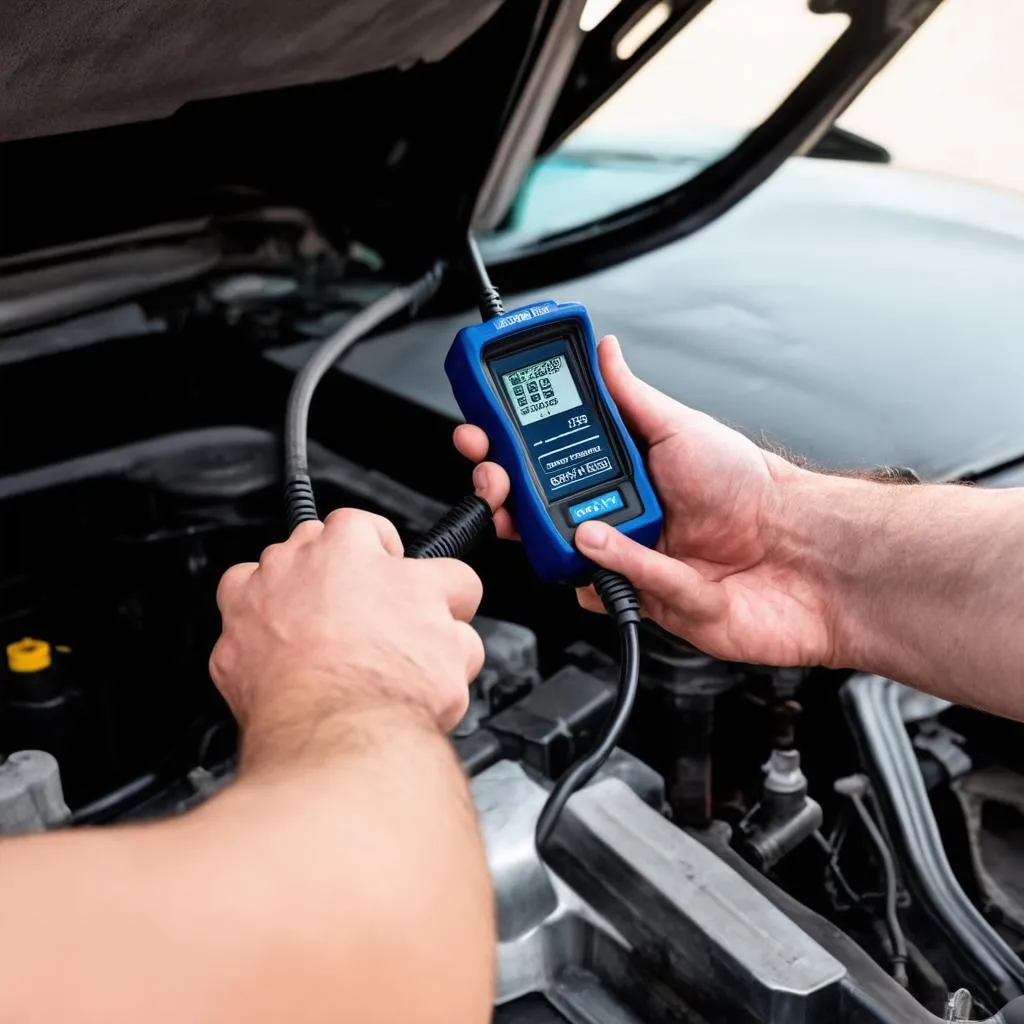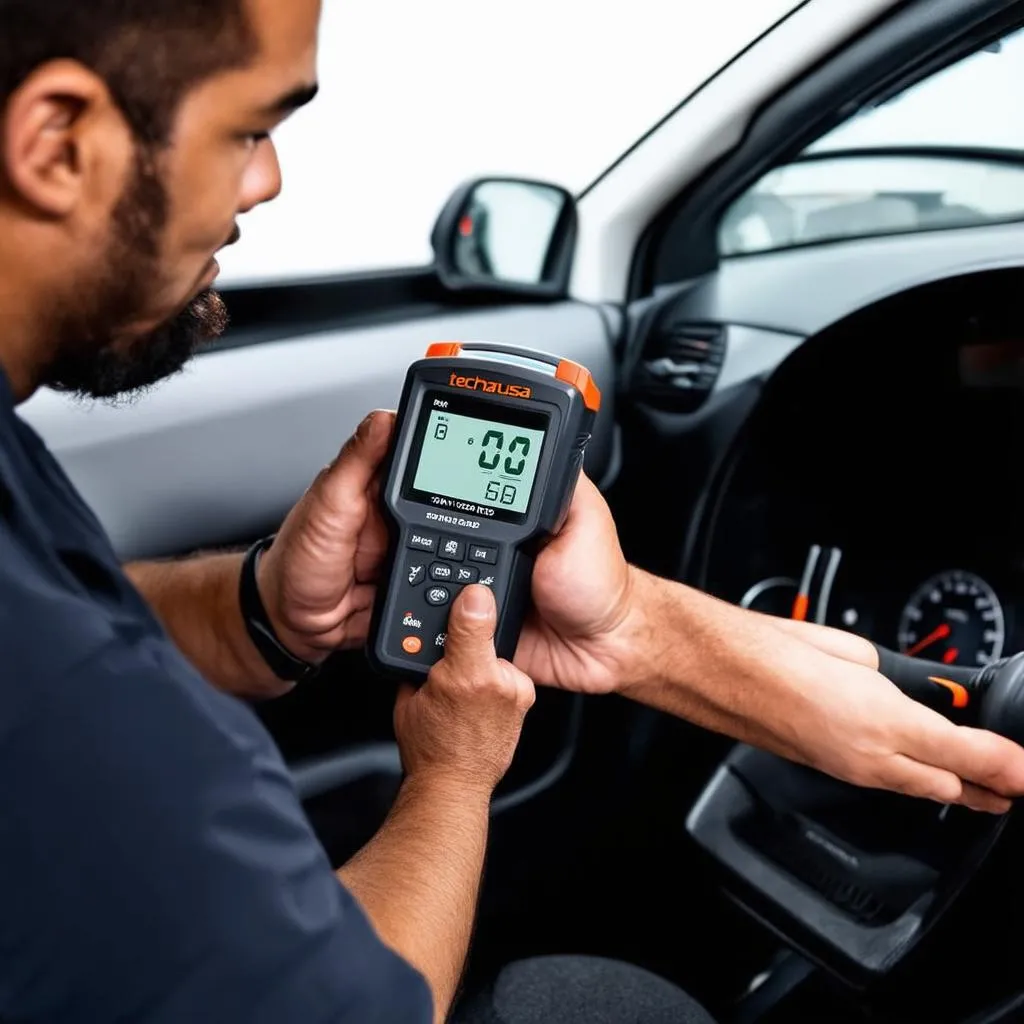Have you ever wondered what that small, rectangular port hidden under your car’s dashboard is for? This mysterious connector, often labeled “OBD” or “OBDII,” is actually the key to understanding your car’s health and performance. It’s a lifeline for mechanics, enthusiasts, and even everyday drivers, allowing access to a wealth of information about your vehicle. Today, we’ll delve into the world of OBD ports, unraveling their secrets and exploring their significance.
What is an OBD Port and Why is it Important?
The OBD port, short for On-Board Diagnostics, acts as a gateway to your car’s internal systems. Imagine it as a small window into the complex workings of your vehicle, providing insights into everything from engine performance to emissions levels.
OBD Port: A Window into Your Car’s Soul
Think of your car’s OBD port as a conduit to its soul. It’s through this port that skilled mechanics can diagnose issues, troubleshoot problems, and even tune your engine for optimal performance. It’s like peering into the heart of your car, revealing its secrets and offering a deeper understanding of its inner workings.
But the significance of the OBD port goes beyond just mechanics. Imagine you’re driving down the highway and suddenly, the “Check Engine” light illuminates on your dashboard. This is where the OBD port comes to the rescue. By connecting a diagnostic tool to this port, you can decipher the error codes stored in your car’s computer, offering valuable clues about the cause of the problem.
The History of OBD Ports
The journey of the OBD port began in the 1980s with the introduction of OBD-I, a rudimentary system primarily focused on emissions control. However, it was the advent of OBD-II in 1996 that truly revolutionized the automotive landscape. This standardized system, now ubiquitous in most vehicles, provided a universal language for diagnostics, paving the way for advanced tools and applications.
Understanding OBD-II and its Significance
OBD-II, the current standard for vehicle diagnostics, goes beyond simply detecting emissions issues. It encompasses a wide range of diagnostic capabilities, including:
- Engine performance: Monitoring fuel consumption, engine temperature, and other vital parameters.
- Transmission: Detecting problems related to shifting and gear selection.
- ABS and Traction Control: Identifying issues with braking and stability systems.
- Airbag System: Analyzing the integrity of the airbag deployment system.
- Emissions control: Detecting faults in the emissions system, including catalytic converter efficiency.
How to Find the OBD Port in Your Car
The OBD-II port is usually located under the driver’s side dashboard, often near the steering column. It’s a standard 16-pin connector, easily identifiable by its rectangular shape. However, the exact location may vary depending on the car make and model.
Here are some tips for finding your OBD port:
- Check your owner’s manual: This should provide a clear illustration of the port’s location.
- Look for a rectangular port: The OBD port is typically a small, rectangular connector with 16 pins.
- Search online: Many websites and forums offer detailed diagrams and instructions for finding the OBD port in specific car models.
- Consult a mechanic: If you’re struggling to find the port, a mechanic can easily point it out to you.
 obd-port-location
obd-port-location
Using OBD Scanners to Access Your Car’s Data
Once you’ve located the OBD port, you can access your car’s wealth of information using a diagnostic scanner. These devices, ranging from basic code readers to sophisticated professional-grade tools, connect to the OBD port and display diagnostic data, error codes, and other valuable insights.
What Can You Do with an OBD Scanner?
- Diagnose engine issues: Identify the root cause of the “Check Engine” light and other engine-related problems.
- Reset error codes: Clear error codes after repairs, allowing your car’s system to reset.
- Monitor real-time data: Access real-time data streams, such as engine speed, fuel consumption, and sensor readings.
- Improve your car’s performance: Optimize your car’s performance by adjusting fuel settings and other parameters.
- Track your vehicle’s history: View past diagnostics and repairs, creating a comprehensive record of your car’s health.
 obd-scanner
obd-scanner
What is the OBD Port Used For?
Now, let’s dive into some of the common applications of the OBD port:
1. Diagnosing Engine Problems
The OBD port is the first line of defense when diagnosing engine problems. By reading error codes, you can gain insights into potential issues, such as a faulty oxygen sensor, a clogged catalytic converter, or a misfire in one of the cylinders.
2. Emissions Testing
The OBD port plays a crucial role in emissions testing. When you take your car for an emissions inspection, the inspector will use a specialized scanner to connect to the OBD port and assess your car’s emissions levels.
3. Improving Fuel Efficiency
By accessing data like fuel consumption and engine load, you can identify areas for improvement.
4. Optimizing Engine Performance
For performance enthusiasts, the OBD port offers a gateway to fine-tuning engine parameters, adjusting settings for optimal performance.
Frequently Asked Questions About OBD Ports
Q: Can I use an OBD scanner on any car?
A: Most cars manufactured after 1996 are equipped with an OBD-II port, making them compatible with most OBD scanners. However, older cars might require specialized adapters or tools.
Q: Is it safe to use an OBD scanner?
A: Using an OBD scanner is generally safe. However, it’s essential to choose a reputable brand and avoid tampering with sensitive settings without proper knowledge and expertise.
Q: Can I use an OBD scanner to reset my car’s computer?
A: Yes, you can use an OBD scanner to reset your car’s computer, also known as clearing the error codes. This can be useful after repairs or if you’re experiencing minor issues.
Q: Can I use an OBD scanner to tune my car’s engine?
A: Some advanced OBD scanners offer tuning capabilities. However, tuning your car’s engine without proper knowledge and expertise can be risky. It’s best to consult a qualified tuner or mechanic.
OBD Port: A Gateway to a Deeper Understanding of Your Car
The OBD port is more than just a small connector hidden under your dashboard. It’s a powerful tool that empowers you to understand your car better, troubleshoot problems, and even enhance its performance. By taking advantage of this valuable resource, you can unlock the secrets of your vehicle, gain peace of mind, and ensure it’s running at its best.
Need Help with OBD Diagnostics?
Looking for assistance with OBD diagnostics? Our team of experts at techcarusa.com is here to help! We offer a wide range of services, including:
- OBD diagnostics and repair: Our skilled technicians can diagnose and repair any OBD-related issues.
- OBD scanner selection: We can help you choose the right OBD scanner for your needs and budget.
- OBD training and support: We offer comprehensive training programs and ongoing support for OBD diagnostics.
Contact us today via WhatsApp: +84767531508
 obd-diagnostics-service
obd-diagnostics-service
Let us help you navigate the world of OBD diagnostics and keep your car running smoothly!
Don’t forget to leave a comment below and share your thoughts and experiences with OBD ports!